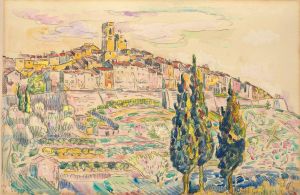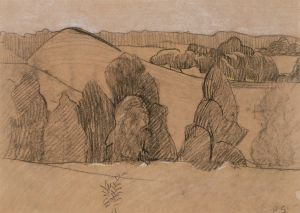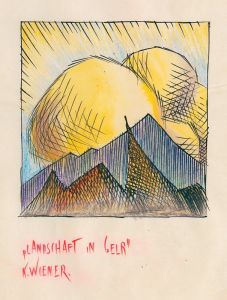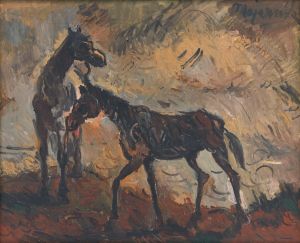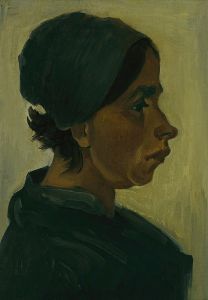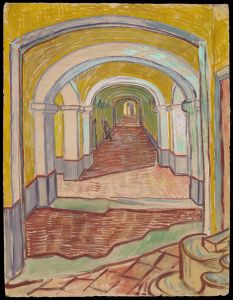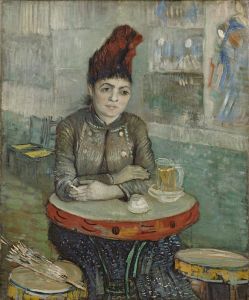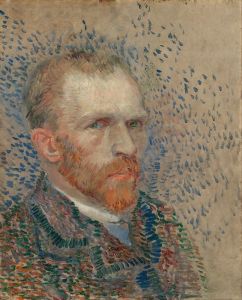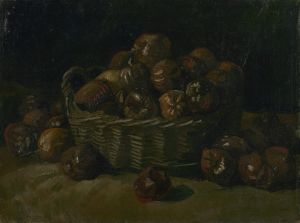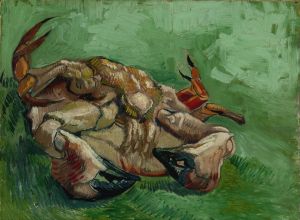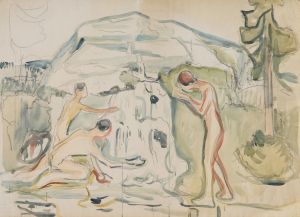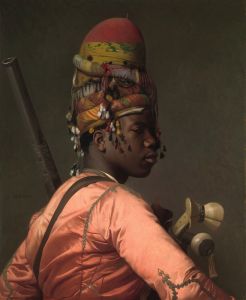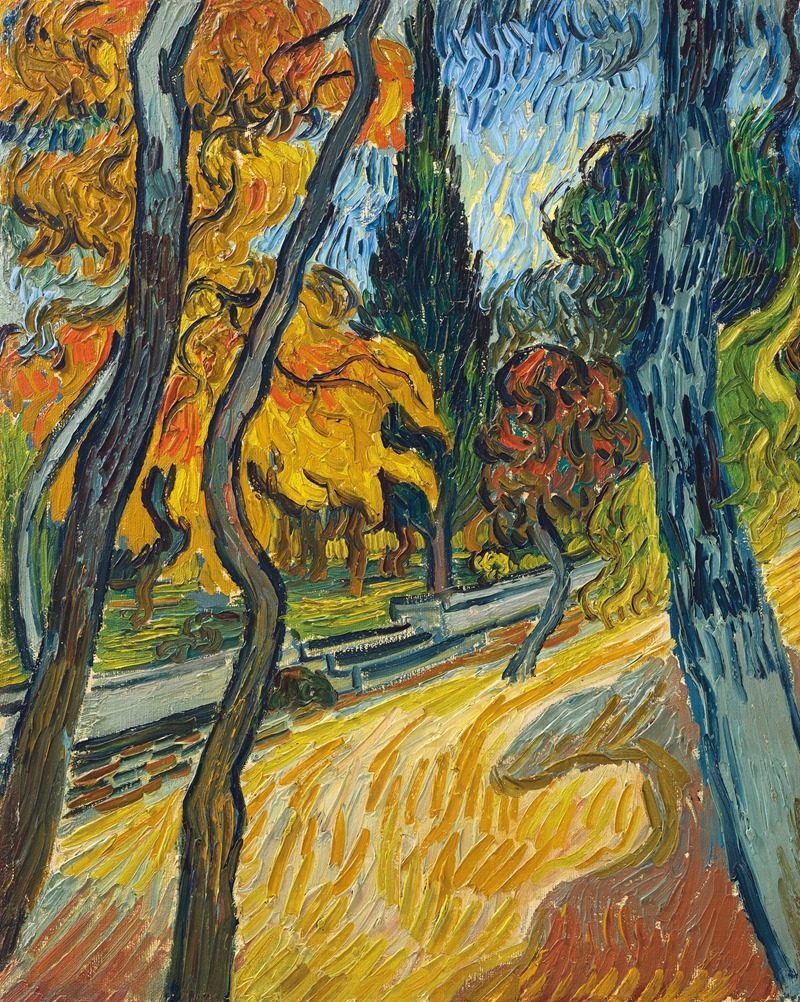
Arbres dans le jardin de l’asile
A hand-painted replica of Vincent van Gogh’s masterpiece Arbres dans le jardin de l’asile, meticulously crafted by professional artists to capture the true essence of the original. Each piece is created with museum-quality canvas and rare mineral pigments, carefully painted by experienced artists with delicate brushstrokes and rich, layered colors to perfectly recreate the texture of the original artwork. Unlike machine-printed reproductions, this hand-painted version brings the painting to life, infused with the artist’s emotions and skill in every stroke. Whether for personal collection or home decoration, it instantly elevates the artistic atmosphere of any space.
"Arbres dans le jardin de l’asile" (Trees in the Garden of the Asylum) is a painting created by the Dutch post-impressionist artist Vincent van Gogh in 1889. This work is part of a series of paintings that Van Gogh produced during his stay at the Saint-Paul-de-Mausole asylum in Saint-Rémy-de-Provence, France. Van Gogh voluntarily admitted himself to the asylum in May 1889 after experiencing a series of mental health crises, including the infamous incident in which he severed part of his own ear.
During his time at the asylum, Van Gogh was given a room that overlooked the garden, and he was allowed to paint both within the asylum grounds and in the surrounding countryside. This period proved to be highly productive for Van Gogh, despite his ongoing struggles with mental illness. He created some of his most famous works during this time, including "The Starry Night" and "Irises."
"Arbres dans le jardin de l’asile" depicts a scene within the asylum's garden, characterized by its expressive use of color and dynamic brushwork. The painting features a group of trees with twisting trunks and branches, rendered in Van Gogh's distinctive style. The foliage is depicted with bold, swirling strokes of green, yellow, and blue, creating a sense of movement and vitality. The ground is covered with a carpet of grass and flowers, painted in a similarly vibrant palette.
Van Gogh's use of color in this painting is particularly noteworthy. He employed contrasting hues to create a sense of depth and to convey the emotional intensity of the scene. The interplay of light and shadow adds to the overall effect, highlighting the textures of the tree bark and the lushness of the garden.
The painting reflects Van Gogh's deep connection to nature and his ability to find beauty and solace in his surroundings, even during a period of personal turmoil. His time at the asylum allowed him to focus on his art without the distractions and pressures of the outside world, leading to a remarkable period of creativity.
"Arbres dans le jardin de l’asile" is now part of the collection of the Kröller-Müller Museum in Otterlo, Netherlands. The museum houses one of the largest collections of Van Gogh's works, providing a comprehensive overview of his artistic development. This painting, like many others from Van Gogh's time at the asylum, is celebrated for its emotional depth and technical mastery.
Van Gogh's legacy as an artist has grown significantly since his death in 1890, and his works are now considered some of the most important contributions to Western art. "Arbres dans le jardin de l’asile" stands as a testament to his enduring genius and his ability to transform his personal struggles into profound and moving works of art.





